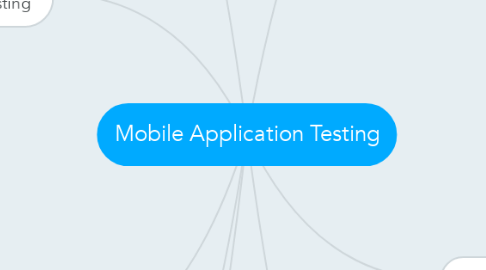
1. Functional Testing
1.1. Login
1.1.1. UserID/Password
1.1.2. Social Networks SSO
1.2. Registration
1.2.1. by e-mail Id
1.2.2. by social network SSO
1.3. Filed validations
1.3.1. Passwords
1.3.2. email Id
1.3.3. Number only
1.3.4. input sanitizations
1.3.5. mandatory field validations
1.3.6. input length constrains
1.4. Data Sharing
1.4.1. Via e-mail
1.4.2. via bluetooth
1.4.3. via social networking apps
1.5. Payment Gateways
1.6. Work flows
2. Interruption Testing
2.1. Calls
2.2. SMS
2.3. Network Connection/Dissconnection
2.4. App background and resume
2.5. kill process and launch
2.6. Notifications
2.7. acessories connected/disconnected
2.8. Charger connected/disconnected
2.9. wearables connected/disconnected
2.10. lock/unlock screen
3. Usability Testing
3.1. Readability of text
3.2. Color contrast
3.3. Number of clicks required
3.4. Screen Orientation
3.4.1. Landscape
3.4.2. Portrait
3.5. Scroll-able screens for small displays
3.6. screen navigation
3.7. full screen toggling
3.8. input options for special characters / Emojis
3.9. Localization/ Internationalization
4. Performance Testing
4.1. Battery
4.1.1. Application Behaviour in Low Power Mode
4.1.2. Power consumption in Background mode
4.2. Network
4.2.1. Amount of data transmitted
4.2.2. Caching repetitive data on client
4.3. Memory
4.3.1. Low Memory conditions
4.3.2. cache clearing at intervals
4.4. CPU
4.4.1. CPU utilization
4.4.2. CPU when app is backgrounded
4.4.3. Device temperature
5. Compatibility Testing
5.1. platform
5.1.1. IOS
5.1.2. Android
5.1.3. Windows
5.1.4. BlackBerry
5.2. Screen size
5.3. OS Versions
5.4. Network compatibility
5.4.1. WIFI
5.4.2. 2G
5.4.3. 3G
5.4.4. Flight Mode
5.5. Devices
5.5.1. Phones
5.5.2. Tablets
5.5.3. Wearables

